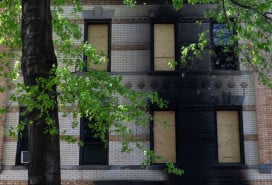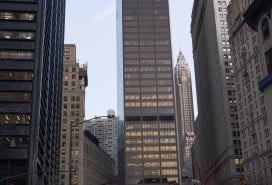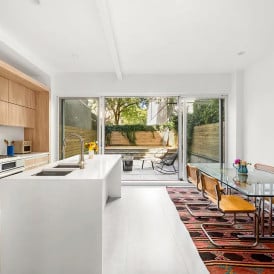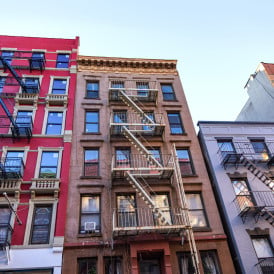Manhattan deals hit new two-year high as inventory wanes
- Listings were down 7 percent annually, ‘overpowered’ by a jump in sales
- Median sales price increased 5.8 percent to $1,180,000, as per the Elliman Report

Manhattan sales jumped annually to their highest level in more than two years, an increase of 13.4 percent.
iStock
Once again, the Manhattan sales market saw quarter with booming sales in contrast to the largely “sluggish” national real estate market.
In the third quarter, sales jumped annually to their highest level in more than two years, an increase of 13.4 percent, according to the latest edition of the Elliman Report, which covers Manhattan co-op and condo sales.
Both median and average sales prices rose annually for the third time; the median sales price increased 5.8 percent to $1,180,000 while the average sales price ticked up by .8 percent to $2,098,658 compared to the year-ago quarter, as per the Elliman Report.
Not all arrows pointed up: the median sales price for new development dropped 18.4 percent to $1,750,000. However, new development saw its highest market share in more than six years, wrote Jonathan Miller, president and CEO of appraisal firm Miller Samuel and author of the report.
The subplot for the quarter is inventory, which was “overpowered” by deals, Miller said. Listings were down 7 percent annually. New development and luxury inventory both fell again.
‘Trophy opportunities’
The upward trajectory of Manhattan’s residential market defied “economic and political headwinds,” said Coury Napier, director of research at SERHANT in his firm’s report.
The $1–$3 million segment dominated market activity again, accounting for 39 percent of all sales. A surge in deals in the $10–$20 million tier, however, was “a clear indicator that high-net-worth buyers are continuing to act on trophy opportunities,” Napier wrote.
Buyers got a jump on the competition
Compass also released a Manhattan sales market report for the third quarter, which noted that Manhattan buyers swung into action “ahead of intensified competition as rates began to trickle downward.”
But many buyers are waiting for interest rates to drop further, and for the mayoral election to be over, said broker Ian Slater. He also noted that many NYC co-op buildings are relaxing their notoriously strict rules in an effort to attract buyers.
Another factor boosting sales in the third quarter: Sellers coming to grip with reality.
“Sellers whose properties have been sitting adjusted their prices to something more realistic,” said broker Michael J. Franco. “Renovated properties, which are priced well are selling” thanks to cash buyers, he said. “Most buyers don’t want to renovate.”
Looking ahead
In her firm’s Manhattan third quarter market report, Bess Freedman, CEO of Brown Harris Stevens, wrote that momentum is expected to carry into year-end, fueled by low mortgage rates, strong Wall Street bonuses, and limited inventory.
The co-op market showed strength, with average prices rising from both the previous quarter and last year, Freedman noted.
Decline in new development contracts
About 298 Manhattan new development contracts were signed in in the third quarter, a 15 percent decline from the third-quarter, 10-year average (349), according to a report from Brown Harris Stevens Development Marketing.
Manhattan total contract dollar volume based on the last asking price was $1.3 billion, driven in large part by estimated sales at 80 Clarkson.
“Contracting supply is a main contributor to softening demand in Manhattan…[b]ecause we expect this trend to continue through at least 2028, we see real supply continuing to tighten,” said Stephen Kliegerman, president at BHSDM. “Despite this, contracting mortgage rates, strong equities markets, and a weak dollar against many global currencies may help propel sales in the coming quarters.”
On a streak
Corcoran’s market report noted that overall Manhattan contract activity marked the sixth straight quarter of annual growth and one of its longest positive streaks since before 2009.
“The fundamentals of this market remain solid, fueled by strong demand and a very active luxury segment. As we head into the final quarter of 2025 and look ahead to 2026, we remain confident in Manhattan’s strength and long-term appeal,” said Pamela Liebman, president and CEO at Corcoran.
You Might Also Like




























